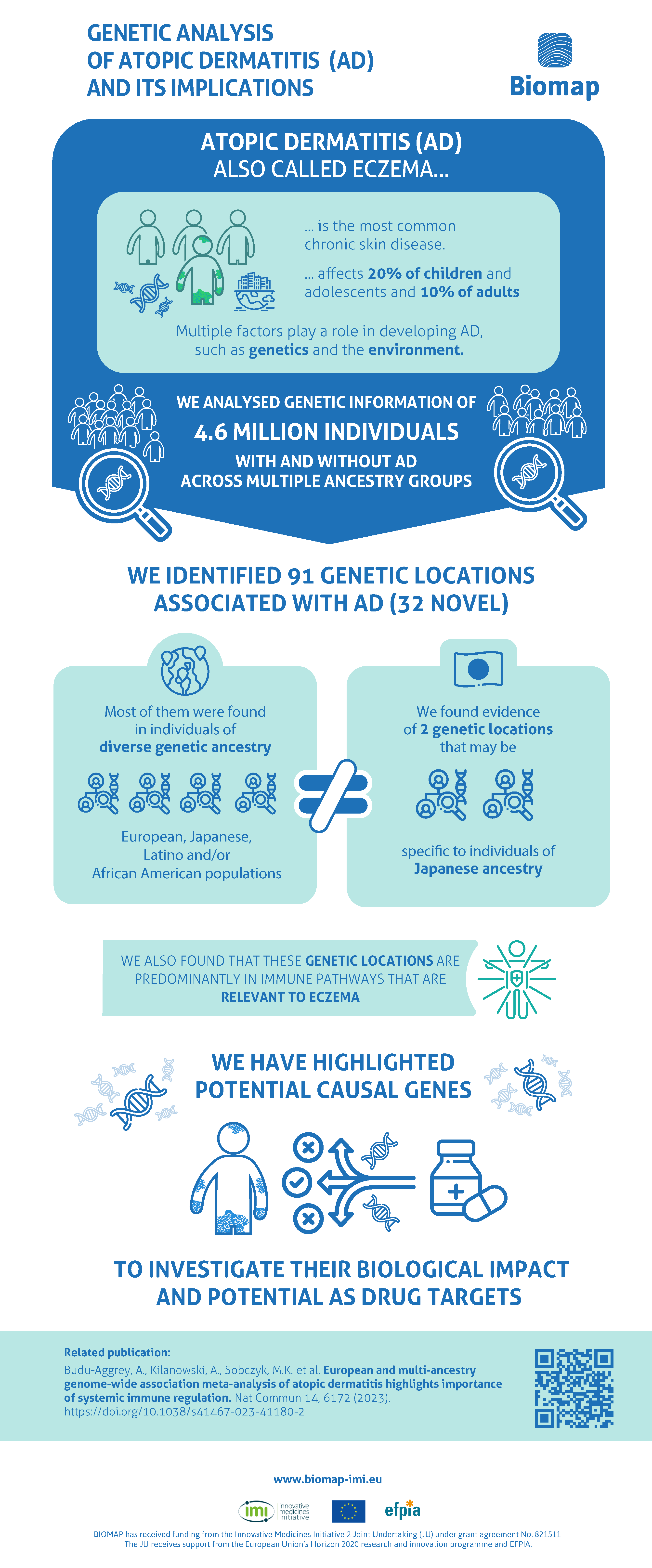European and multi-ancestry genetic analysis of atopic dermatitis and its implications
Atopic dermatitis (AD; also called eczema) is a chronic skin disease that affects up to 20% of children and 10% of adults. Multiple factors play a role in developing AD, such as genetics and the environment. Several genetics studies have been performed in people with AD and some have identified genetic locations that might play a role in AD.
The aim of our study, conducted by a vast consortium of researchers, was to perform the largest and most comprehensive genetic analysis for AD. We analysed genetic information of 4.6 million individuals, with and without AD, across multiple ancestry groups.
We identified 91 genetic locations associated with AD (32 novel). Most of them were found in individuals of diverse genetic ancestry (European, Japanese, Latino and/or African American populations). However, we found evidence of 2 genetic locations that may be specific to individuals of Japanese ancestry, highlighting the genetic differences between ancestry groups.
We also found that these genetic locations for AD are most represented in blood rather than skin tissue. Based on our findings we were able to prioritise candidate genes, implicating relevant immune system pathways and uncovered drug repurposing opportunities.
Our study contributes a significant increase in the knowledge of AD genetics, and has provided robust data for future studies. We have highlighted potential causal genes and will go on to investigate their biological impact and potential as drug targets.
Related publication: European and multi-ancestry genome-wide association meta-analysis of atopic dermatitis highlights importance of systemic immune regulation
Budu-Aggrey, A., Kilanowski, A., Sobczyk, M.K. et al. European and multi-ancestry genome-wide association meta-analysis of atopic dermatitis highlights importance of systemic immune regulation. Nat Commun 14, 6172 (2023). https://doi.org/10.1038/s41467-023-41180-2

